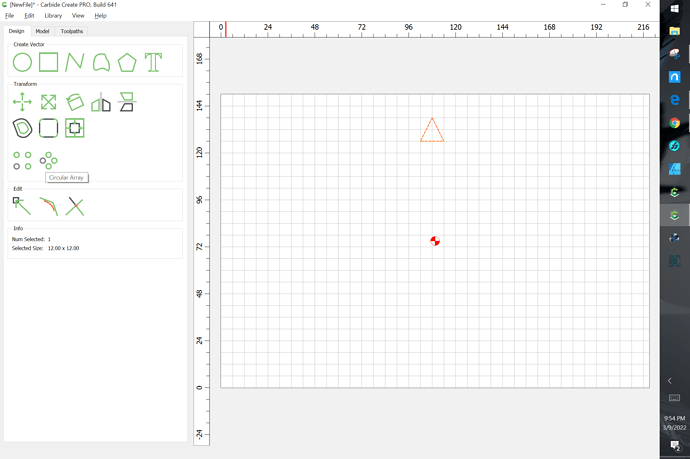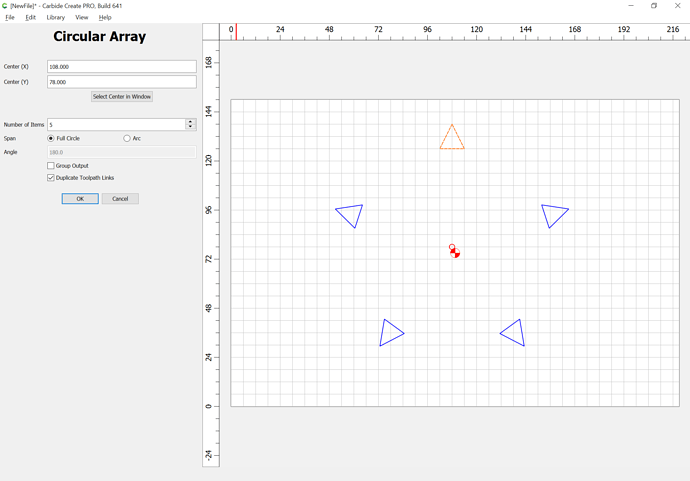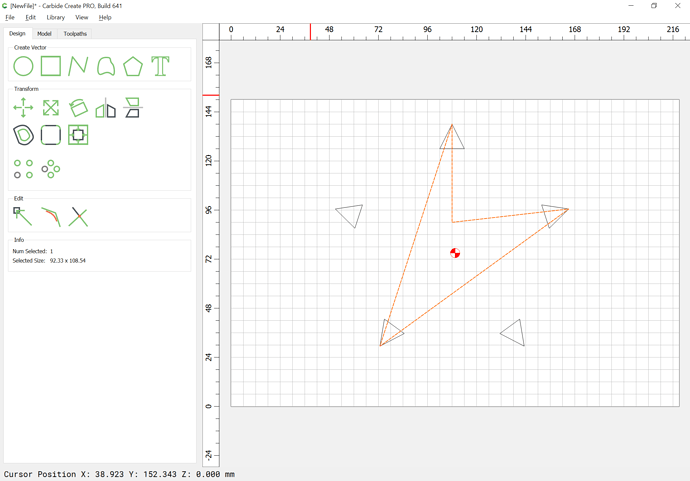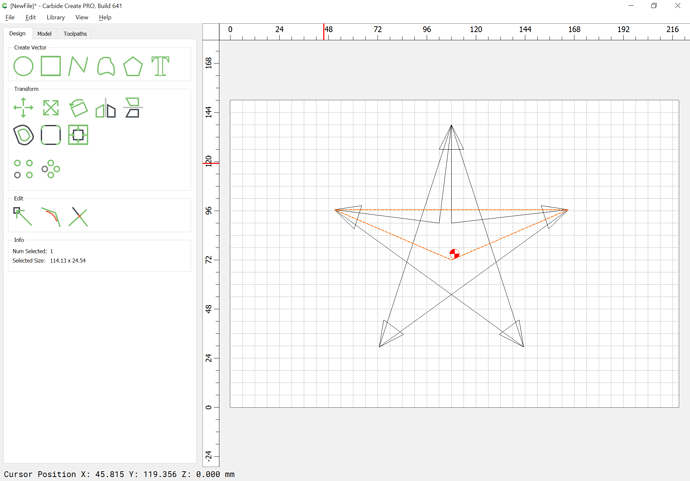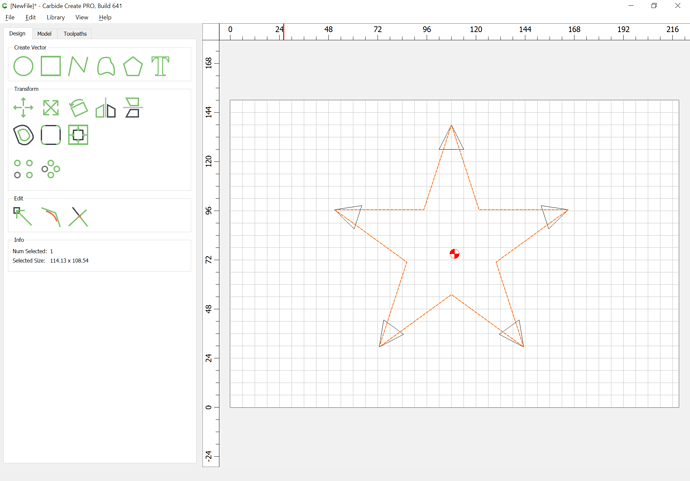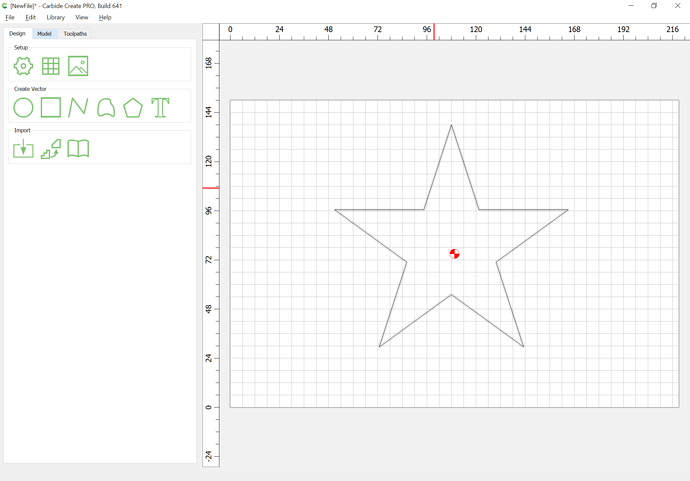CC641 (now in beta) adds a Circular Array command which makes this a bit more straight-forward:
Draw a triangle:
Select it and choose “Circular Array”:
set the number of items to 5 and either type in the numbers for the center or press the button “Select Center in Window” and then click in the window to indicate the desired centerpoint:
OK
While the immediate impulse is to just draw the entire star at once:
this results in a self-intersecting geometry which isn’t a good way to draw things — instead, draw parts of the star using a few points at a time so that they overlap:
Then select them all:
and Boolean Union:
arriving at:

